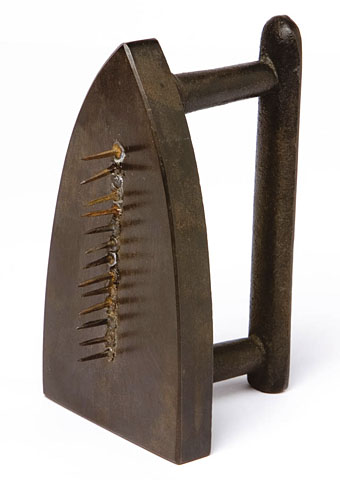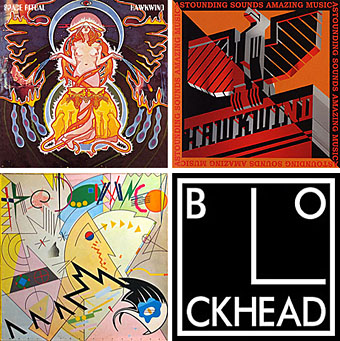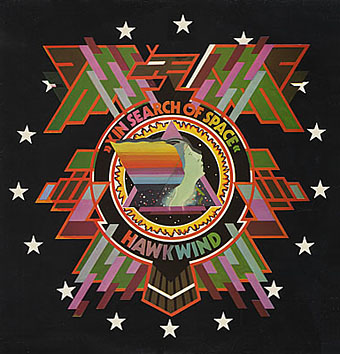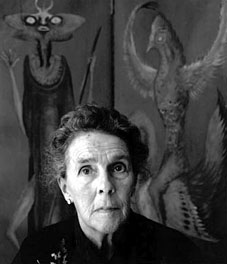Guernica by Pablo Picasso (1937).
• The legacy of Guernica (the event)
• Echoes of Guernica (the painting)
A journal by artist and designer John Coulthart.
Guernica by Pablo Picasso (1937).
• The legacy of Guernica (the event)
• Echoes of Guernica (the painting)

Cadeau Audace by Man Ray (1921).
L’amour fou by Robert Hughes
Fur teacups, wheelbarrow chairs, lip-shaped sofas … the fashion, furniture and jewellery created by the Surrealists were useless, unique, decadent and, above all, very sexy.
The Guardian, Saturday March 24th, 2007
THE VICTORIA AND Albert’s big show for this year, Surreal Things: Surrealism and Design, is—well, maybe we don’t much like the word “definitive”. But it’s certainly the first of its kind.
Everyone knows something about surrealism, the most popular art movement of the 20th century. The word has spread so far that people now say “surreal” when all they mean is “odd”, “totally weird” or “unexpected”. No doubt this would give heartburn to André Breton, the pope of the movement nearly a century ago, who took the title from his friend, the poet Guillaume Apollinaire, who had called his play The Breasts of Tiresias, “a surrealist drama”. But too late now. The term is many years out of its box and, through imprecision, has achieved something akin to eternal life. Surrealist painting and film, that is. In fact, some surrealist images have imprinted themselves so deeply and brightly on our ideas of visual imagery that we can’t imagine modern art (or, in fact, the idea of modernity itself) without them.
Think Salvador Dalí and his soft watches in The Persistence of Memory. Think Dalí again, in cahoots with Luis Buñuel, and the cut-throat razor slicing through the girl’s eye, as a sliver of cloud crosses the moon (actually, the eye belongs to a dead cow, but you never think this when you see their now venerable but forever fresh movie An Andalusian Dog, 1929). Think of photographer Man Ray’s fabulous Cadeau Audace (‘Risky Present’, 1921), the flatiron to whose sole a row of tacks was soldered, guaranteeing the destruction of any dress it would be used on. Think of Rene Magritte’s The Rape, that hauntingly concise pubic face, with nipples for eyes and the hairy triangle where the mouth should be. Think of the shock, the horniness, the rebellion, the unwavering focus on creative freedom, the obsessive efforts to discover the new in the old by disclosure of the hidden…
Continues here
Previously on { feuilleton }
• The Surrealist Revolution
• Surrealist Women
• Las Pozas and Edward James
• Surrealist cartomancy

Image-heavy post! Please be patient.
Four designs for three bands, all by the same designer, the versatile and brilliant Barney Bubbles. A recent reference over at Ace Jet 170 to the sleeve for In Search of Space by Hawkwind made me realise that Barney Bubbles receives little posthumous attention outside the histories of his former employers. Since he was a major influence on my career I thought it time to give him at least part of the appraisal he deserves. His work has grown in relevance to my own even though I stopped working for Hawkwind myself in 1985, not least because I’ve made a similar transition away from derivative space art towards pure design. Barney Bubbles was equally adept at design as he was at illustration, unlike contemporaries in the album cover field such as Roger Dean (mainly an illustrator although he did create lettering designs) and Hipgnosis (who were more designers and photographers who drafted in illustrators when required).
Colin Fulcher became Barney Bubbles sometime in the late sixties, probably when he was working either part-time or full-time with the underground magazines such as Oz and later Friends/Frendz. He enjoyed pseudonyms and was still using them in the 1980s; Barney Bubbles must have been one that stuck. The Friends documentary website mentions that he may have worked in San Francisco for a while with Stanley Mouse, something I can easily believe since his early artwork has the same direct, high-impact quality as the best of the American psychedelic posters. Barney brought that sensibility to album cover design. His first work for Hawkwind, In Search of Space, is a classic of inventive packaging.
Update: BB didn’t work with Mouse in SF, I’ve now been told.

Hawkwind: In Search of Space (1971).
It’s fair to say that Hawkwind were very lucky to find Barney Bubbles, he immediately gave their music—which was often rambling and semi-improvised at the time—a compelling visual dimension that exaggerated their science fiction image while still presenting different aspects of the band’s persona. In Search of Space is an emblematic design that opens out to reveal a poster layout inside. One of the things that distinguishes Barney Bubbles’ designs from other illustrators of this period is a frequent use of hard graphical elements, something that’s here right at the outset of his work for Hawkwind.
This album also included a Bubbles-designed “Hawklog”, a booklet purporting to be the logbook of the crew of the Hawkwind spacecraft. I scanned my copy some time ago and converted it to a PDF; you can download it here.

The Guardian profiles the wonderful Leonora Carrington, one of the last of the original Surrealists. There’s little excuse for the Tate’s neglect as recounted below, Marina Warner has championed her work for years and she was the subject of a TV documentary in the BBC’s Omnibus strand in the 1990s. Maybe the Tate curators should watch more television.
Leonora and me
Leonora Carrington ran off with Max Ernst, hung out with Picasso, fled the Nazis and escaped from a psychiatric hospital. Joanna Moorhead travels to Mexico to track down her long-lost cousin, one of Britain’s finest—and neglected—surrealists.
Joanna Moorhead
Tuesday January 2, 2007
The Guardian
A few months ago, I found myself next to a Mexican woman at a dinner party. I told her that my father’s cousin, whom I’d never met and knew little about, was an artist in Mexico City. “I don’t expect you’ve heard of her, though,” I said. “Her name is Leonora Carrington.”
The woman was taken aback. “Heard of her? My goodness, everyone in Mexico has heard of her. Leonora Carrington! She’s hugely famous. How can she be your cousin, and yet you know nothing about her?”
How indeed? At home, I looked her up, and found myself plunged into a world of mysterious and magical paintings. Dark canvases dominated by a large, sinister-looking house; strange and slightly menacing women, mostly tall and wearing big cloaks; ethereal figures, often captured in the process of changing from one form to another; faces within bodies; long, spindly fingers; horses, dogs and birds.
I remembered from childhood hearing stories about a cousin who had disappeared “to be an artist’s model”. But the truth was infinitely richer and more thrilling. Leonora Carrington, born into a bourgeois family, eloped at the age of 20 to live with the surrealist artist, Max Ernst (married, and some 20 years her senior). The couple fled across war-torn Europe in the late 1930s, and she later settled in Mexico, where she continued to paint, write and sculpt.
Most excitingly, though, Leonora was still alive – aged nearly 90 and living in a suburb of Mexico City with her husband, a Hungarian photographer. I contacted my Carrington cousins and discovered that one of them had visited her a couple of years ago: she was, he reported, on amazing form, and still working. I wrote to ask whether she’d be prepared to meet. Word came back that she would, and a few weeks later I flew to Mexico City.
Leonora Carrington looks eerily like my father – the same piercing eyes, the same trace of an upper-class English accent. We met at her house, and she led me through her dark dining room, crammed with her sculptures, to the kitchen where we were to spend most of the next three days, chatting endlessly over cups of Lipton’s tea (“I hardly touch alcohol,” she told me. “Enough people in our family have died of drink. Anyway I smoke, and it’s too much to drink and smoke.”)
Leonora was born in 1917, the only daughter (she had three brothers) of textile magnate Harold Carrington and his Irish wife, Maurie Moorhead, my grandfather’s older sister. Harold and Maurie were very different characters: where he was entrepreneurial, Protestant and a workaholic, Maurie was easy-going, Catholic and open-minded. The family home was an imposing mansion in Lancashire, Crookhey Hall – the sinister house that features in many of her paintings.
Leonora was expelled from three or four schools, but the one thing she did learn was a love of art. Her father was not keen on her going to art college, but her mother intervened and she was allowed to go and study in Florence. There, she was exposed to the Italian masters, whose love of gold, vermilion and earth colours were to inspire her later work.
She returned to England brimming with enthusiasm for the artist’s life, but her father had other ideas. As far as he was concerned, she had sown her wild oats and now needed to come back to earth. This meant launching her as a debutante: a ball was held in her honour at the Ritz, and she was presented to George V. A few years later, in a surreal short story The Debutante, she poured out her loathing of “the season”, with a witty description of sending a hyena along to take her place at her coming-out ball.
In 1936, the first surrealist exhibition opened in London – for Leonora, something of an epiphany. “I fell in love with Max [Ernst]’s paintings before I fell in love with Max,” she says. She met Ernst at a dinner party. “Our family weren’t cultured or intellectual – we were the good old bourgeoisie, after all,” she says. “From Max I had my education: I learned about art and literature. He taught me everything.”
Continues here.
Elsewhere on { feuilleton }
• The fantastic art archive
Previously on { feuilleton }
• Las Pozas and Edward James
• Surrealist cartomancy